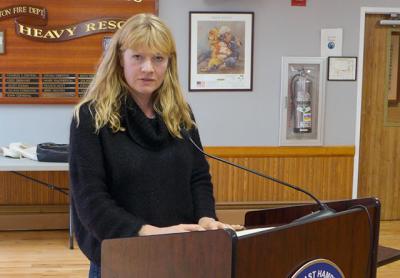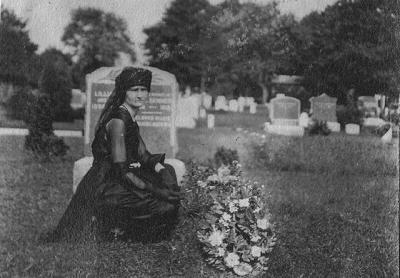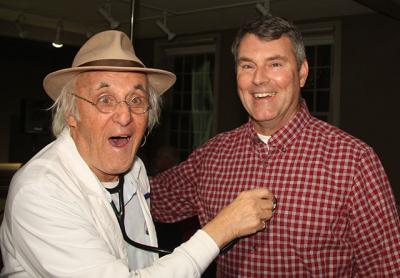Restaurant's Renovation From the Foundation Up
Restaurant's Renovation From the Foundation Up

The Japanese restaurant Sen, a year-round fixture on Main Street in Sag Harbor for 25 years, closed on Oct. 1 to undergo a gut renovation, with the owners having thought the work would be completed and the restaurant reopened in April. Mid-renovation revelations about the soundness of the building, which dates to the 1800s, however, have made it clear that it will be at least mid-June until Sen can open its doors.
“We discovered that the front of the building wasn’t sitting on the foundation; it was floating,” Jesse Matsuoka said. He owns Sen in partnership with his brother, Tora, and Jeff Resnick, a businessman and former owner of the La Superica restaurant across the street. “Our contractor said he was amazed the building was standing up,” Mr. Matsuoka said.
Not only did the renovation show that the building wasn’t well grounded, it was discovered that the entire building was tilted. “It was leaning 41/2 inches,” said Nick Zappola, co-owner of N. Zappola and Associates, the firm doing the work. “Basically, we had to re-engineer the whole structure. Now it’s set to go for another 200 years.”
By the time the project is finished, everything in the restaurant except the marble of the sushi bar will have been replaced. And while the front part of the building will retain its historic look (as mandated by the village code), the back will have an up-to-date appearance.
With the biggest construction head-aches out of the way, Mr. Matsuoka took time last week to discuss the economic benefit of having a bigger and better kitchen. “We had one of the smaller kitchens of the Sag Harbor restaurants,” Mr. Matsuoko said. It will soon have 600 more square feet, which will enable Mr. Matsuoko to enlarge the restaurant’s catering business.
Expanding the restaurant’s bar area will be another result of the renovation. Since Mr. Matsuoko is a certified sake sommelier, the new bar will be particularly sake-centric. But, in addition, the space will be enlarged. “The bar filled up so fast that we would encourage people to go consume alcohol or bites somewhere else,” he said with a laugh.
As for the dining area, it will feature sliding glass doors to allow open-air dining, but, otherwise, won’t seem all that different, he said. “I never wanted to adjust the restaurant itself that much. I want our guests to walk in and feel as if nothing happened‚“ he said. To that end, the décor will adhere to the natural wood and earth tones of the previous incarnation. All the materials that were removed were replaced in kind, Mr. Matsuoka said, “so if we pulled up pine, we put down pine.”
The need to update the restaurant also allowed Mr. Matsuoka to expand and upgrade the second and third floors of the building. These floors contain three apartments used for staff housing. “Providing housing is not only a necessity, but it gives us an edge to hold on to our employees,” Mr. Matsuoka said. “A happy staff equals happy service.”
Although Mr. Matsuoka was hoping to throw a reopening party when the work is finally complete, he said he wasn’t sure that would be possible since it will fall right in the thick of the summer season. Still, he’s looking forward to unveiling Sen’s new look and seeing loyal customers return. “We didn’t want Sen to change. We just wanted to accommodate more and faster.”







